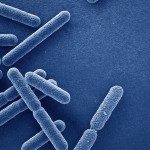About
SEMINAR DEPT MICROBIOLOGY
Friday, September 22nd 2023 at 11:30 am
AUDITORIUM CENTRE FRANCOIS JACOB
Clay Fuqua
Clyde Culbertson Professor of Biology, Department of Biology, Indiana University, Bloomington Indiana, USA
Invited by Jean-Marc Ghigo
“Pterin it up: Complex control of surface attachment and biofilm formation in the model pathogen Agrobacterium tumefaciens”
Abstract:
Agrobacterium tumefaciens can attach to biotic and abiotic surfaces through production of the unipolar polysaccharide (UPP) adhesin. Surface contact is required for UPP production and is modulated by multiple environmental conditions. The intracellular second messenger cyclic diguanylate monophosphate (cdGMP) plays a central role in UPP production, as well as control of several other polysaccharides including cellulose and succinoglycan. There are many A. tumefaciens proteins with diguanylate cyclase (DGC) and phosphodiesterase (PDE) domains that are integrated to control cytoplasmic cdGMP pools. Several of these proteins have a profound effect on UPP production, but the dual function DGC-PDE protein DcpA localizes to the UPP cell pole and exerts potent control over UPP production and surface attachment. In dispersed laboratory cultures, the PDE activity of DcpA is high, dampening cdGMP and UPP formation. DcpA activity is regulated by small metabolites called pterins that are released from the cytoplasm, and associate with a periplasmic binding protein called PruR. PruR physically interacts with the DcpA periplasmic domain to bias its activity strongly toward cdGMP turnover, rather than synthesis. PruR is a degenerate SUOX-type protein, with a novel pterin binding pocket. The PruR-DcpA regulatory module is conserved among multiple pathogenic proteobacteria, and represents a pterin-dependent regulatory circuit. Pterins are produced by all domains of life and are excreted by many bacteria into the external environment, although the reason for excretion is not understood. We hypothesize that the A. tumefaciens PruR-DcpA system has evolved to respond to exogenous pterins, self-produced and produced by other organisms, to modulate surface attachment through agonistic or antagonistic interactions.


